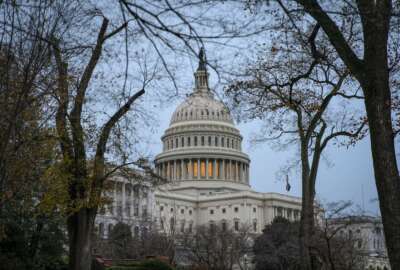
Pay raise or retiree COLA: Who got the best deal?
White collar federal civil servants are on track to get a 3.1% pay raise next year — the largest in a decade for 1.2 million civil servants.
White collar federal civil servants are on track to get a 3.1% pay raise next year. It’s the largest in a decade for 1.2 million civil servants.
Everyone will get 2.6% with the rest divided up on a locality pay basis. That means feds in San Francisco-San Jose, Houston, Chicago, New York City, Philadelphia and the Washington, D.C.-Baltimore area will get more than their counterparts, doing the same job in the same grade and step, in Norfolk, Virginia; Tampa, or Salt Lake City.
Retired federal workers, postal employees, foreign service officers, ex-astronauts and IRS agents will get a 1.6% cost of living adjustment in January. They will get the same amount whether they retired to the D.C. suburbs, in Bellingham, Washington; or live — as some we know do — in Ecuador. Federal Employees Retirement System and Civil Service Retirement System retirees get the same COLA provided it is 2% less. On amounts over that, CSRS employees get the full amount. The diet-COLA feature of the FERS program means they would get 1% less if the raise exceeds 2%.
So for a trick question, who has the best system? Workers who get raises decided by Congress and the White House based on fiscal/political conditions, or retirees whose COLAs track the rate of inflation as measured by the Bureau of Labor Statistics CPI (consumer price index) W? Which provides the most inflation protection?
Here’s the official Office of Personnel Management chart for 2020 General Schedule pay raises both in percentage terms and in their dollar increase for a GS 5, step 5 employee. Please note that the pay raise will go into effect on Jan.1, and data will be available once the rates have been made official:
| 2019 | 1.4% | From $32,805.00 to $33,262.00 / year ($457.00 raise) |
| 2018 | 1.4% | From $32,353.00 to $32,805.00 / year ($452.00 raise) |
| 2017 | 1.0% | From $32,030.00 to $32,353.00 / year ($323.00 raise) |
| 2016 | 1.0% | From $31,714.00 to $32,030.00 / year ($316.00 raise) |
| 2015 | 1.0% | From $31,401.00 to $31,714.00 / year ($313.00 raise) |
| 2014 | 1.0% | From $31,087.00 to $31,401.00 / year ($314.00 raise) |
| 2013 | 0.0% | From $31,087.00 to $31,087.00 / year ($0.00 raise) |
| 2012 | 0.0% | From $31,087.00 to $31,087.00 / year ($0.00 raise) |
| 2011 | 0.0% | From $31,087.00 to $31,087.00 / year ($0.00 raise) |
| 2010 | 1.5% | From $30,630.00 to $31,087.00 / year ($457.00 raise) |
| 2009 | 2.9% | From $29,764.00 to $30,630.00 / year ($866.00 raise) |
| 2008 | 2.5% | From $29,039.00 to $29,764.00 / year ($725.00 raise) |
Here’s the COLA tracker from My Federal Retirement, for federal and military retirees, and for people who get Social Security. Note that federal workers didn’t get any pay raise in 2011, 2012 or 2013 while retirees didn’t get COLAs in 2010 and 2011.
| Year | CSRS COLA | FERS COLA |
| 2019 | 2.8 | 2.0 |
| 2018 | 2.0 | 2.0 |
| 2017 | 0.3 | 0.3 |
| 2016 | 0 | 0 |
| 2015 | 1.7 | 1.7 |
| 2014 | 1.5 | 1.5 |
| 2013 | 1.7 | 1.7 |
| 2012 | 3.6 | 2.6 |
| 2011 | 0 | 0 |
| 2010 | 0 | 0 |
| 2009 | 5.8 | 4.8 |
| 2008 | 2.3 | 2.0 |
| 2007 | 3.3 | 2.3 |
| 2006 | 4.1 | 3.1 |
| 2005 | 2.7 | 2.0 |
| 2004 | 2.1 | 2.0 |
| 2003 | 1.4 | 1.4 |
| 2002 | 2.6 | 2.0 |
| 2001 | 3.5 | 2.5 |
| 2000 | 2.4 | 2.0 |
| 1999 | 1.3 | 1.3 |
Nearly Useless Factoid
By Amelia Brust
The psychological phenomenon of walking into a shopping mall and, upon seeing the confusing layout, completely forgetting the original reason for going there has a name and is by design. The “Gruen transfer,” or “Gruen effect,” was coined by Austrian architect Victor Gruen, and refers to an “idealised hyper-reality that is realized by deliberate reconstruction, providing a sense of safety and calm through exceptional familiarity.” Ironically, Gruen criticized malls for using the technique to manipulate shoppers into impulse buying.
Source: Wikipedia
Copyright © 2024 Federal News Network. All rights reserved. This website is not intended for users located within the European Economic Area.
Mike Causey is senior correspondent for Federal News Network and writes his daily Federal Report column on federal employees’ pay, benefits and retirement.
Follow @mcauseyWFED




